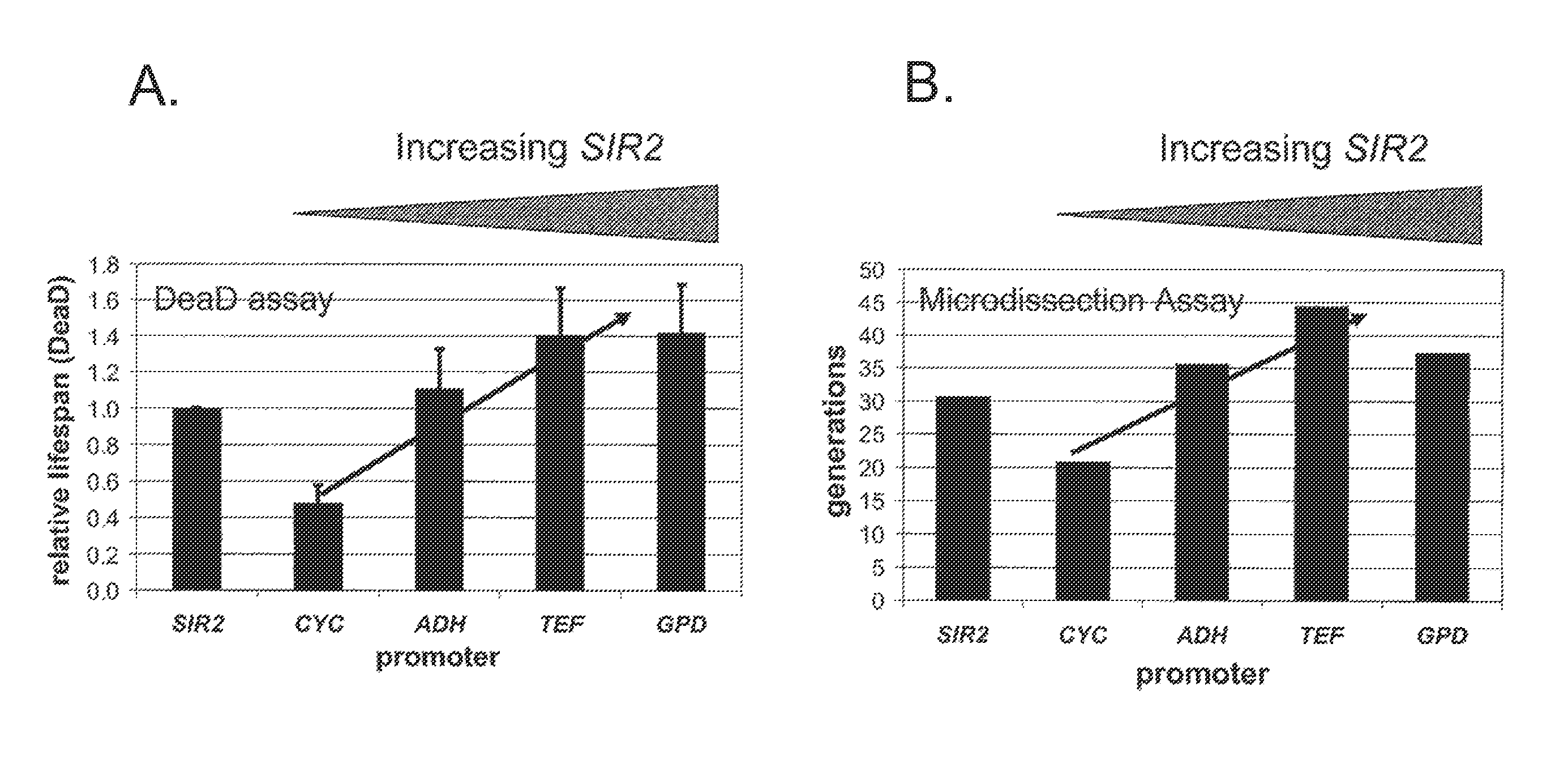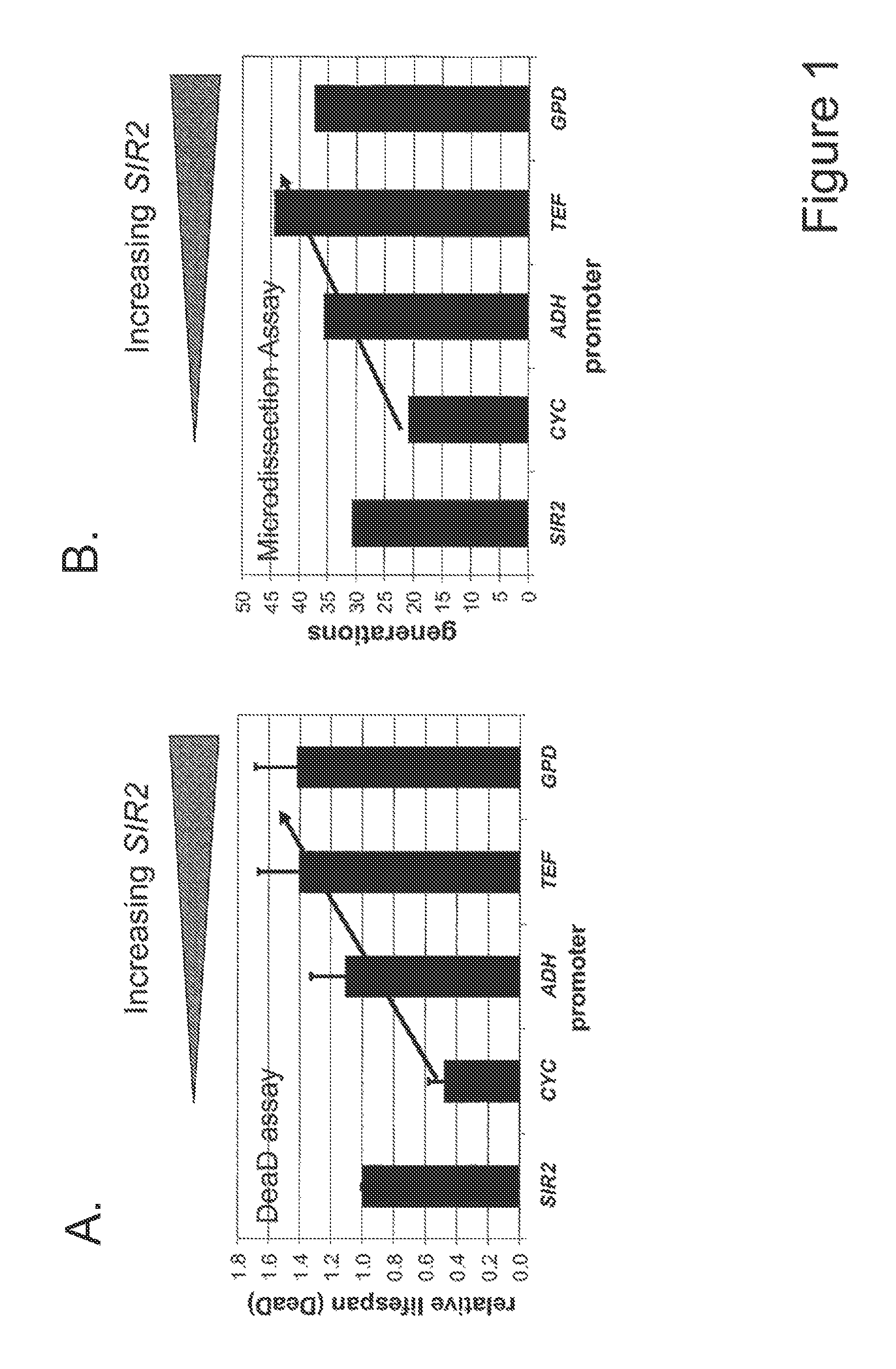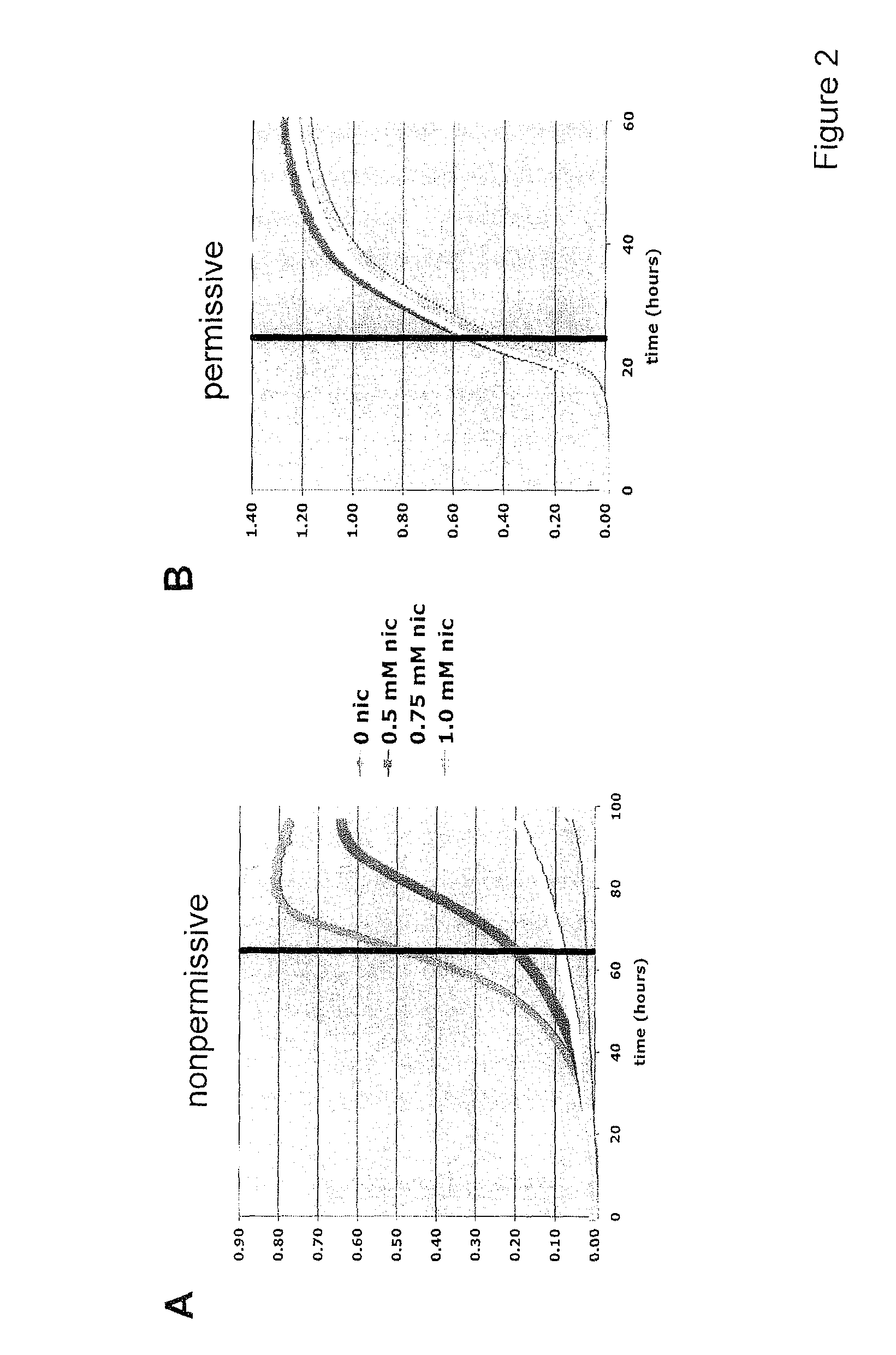Method for altering the lifespan of eukaryotic organisms
a technology of eukaryotic organisms and lifespan, applied in the field of methods of increasing the lifespan of eukaryotic organisms, can solve the problems of not being particularly suitable for altering the cr response, labor-intensive, and time-consuming, and achieve the effect of increasing the lifespan of the eukaryotic organism
- Summary
- Abstract
- Description
- Claims
- Application Information
AI Technical Summary
Benefits of technology
Problems solved by technology
Method used
Image
Examples
example 1
Validation of the DeaD Assay
[0057]The DeaD assay was developed as a high throughput proxy for conventional microdissection assays used to determine yeast replicative ageing. In order to verify the ability of this assay to produce results corresponding to conventional microdissection assay results, the data of FIG. 1 were obtained using either the DeaD assay (panel A) or via microdissection (panel B). As this figure shows, increased SIR2 expression increases lifespan similarly between the DeaD assay and conventional microdissection. FIG. 2 shows additional confirmation of the validity of the DeaD assay; specifically, the data of FIG. 2 show that nicotinamide reduces the lifespan of the DeaD strain in a dose-dependent fashion (panel A) without altering growth under permissive conditions (panel B). These data thus confirm the general applicability of the DeaD assay as a high throughput proxy for conventional microdissection assays of test compounds, and open the door to the use of the ...
example 2
The “775” DeaD Assay Initial Screen of about 132,000 Compounds for the Ability to Counter Nicotinamide Lifespan Shortening
[0058]Having established the suitability of the DeaD assay as a proxy for microdissection, the DeaD assay was used to screen a 132,796 compound library for the ability of compounds in the library to counter the lifespan-shortening effect of nicotinamide.
[0059]Specifically, as described in the AID 775 assay results (synonymously, the “775” assay results) on the “PubChem” website at pubchem.ncbi.nlm.nih.gov / assay / assay.cgi?aid=775, the contents of which are herein incorporated in their entirety by reference, the percent inhibition of nicotinamide lifespan shortening, i.e. percent reversal of nicotinamide effect on lifespan, was calculated using the optical density in control wells with cells treated with 1.5 mM nicotinamide as full lifespan shortening effect of nicotinamide (0% inhibition of nicotinamide), and wells with cells grown in medium without nicotinamide a...
example 3
The “809” DeaD Assay Screen of the Dose-Dependencies of the Top 500 Compounds Identified in Example 1 to Obtain a 50% Effective Concentration (EC50) Value
[0063]As already discussed, Example 2 provides data using the “775” DeaD assay to determine compounds that counter the lifespan-reducing effects of 1.5 mM nicotinamide, with this Example identifying about 900 “active” compounds. Example 2 used only a single compound concentration of 10 uM; in the current Example, the top 500 of these “active” compounds were again screened using the DeaD assay, but now at 8 concentrations ranging from 0.078 to 10 uM, again in the presence of 1.5 mM nicotinamide, resulting in the data provided in Table 1. This more extensive data allowed for the determination of the half maximal effective concentration (EC50). See the “AID 809” assay (the “809” assay) results on the PubChem website at pubchem.ncbi.nlm.nih.gov / assay / assay.cgi?aid=809.
[0064]Thus, in this Example compounds were screened in an 8-point 2-...
PUM
| Property | Measurement | Unit |
|---|---|---|
| absorbance | aaaaa | aaaaa |
| strength | aaaaa | aaaaa |
| concentrations | aaaaa | aaaaa |
Abstract
Description
Claims
Application Information
 Login to View More
Login to View More - R&D
- Intellectual Property
- Life Sciences
- Materials
- Tech Scout
- Unparalleled Data Quality
- Higher Quality Content
- 60% Fewer Hallucinations
Browse by: Latest US Patents, China's latest patents, Technical Efficacy Thesaurus, Application Domain, Technology Topic, Popular Technical Reports.
© 2025 PatSnap. All rights reserved.Legal|Privacy policy|Modern Slavery Act Transparency Statement|Sitemap|About US| Contact US: help@patsnap.com



